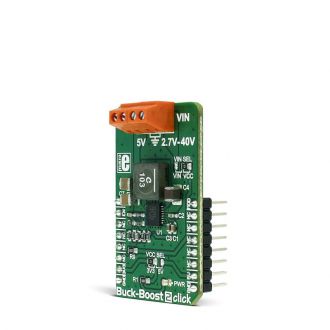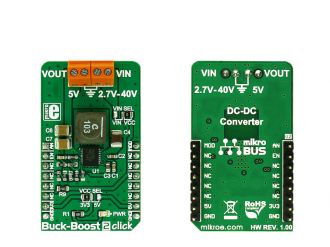
We strongly encourage users to use Package manager for sharing their code on Libstock website, because it boosts your efficiency and leaves the end user with no room for error. [more info]

Rating:
Author: MIKROE
Last Updated: 2018-03-21
Package Version: 1.0.0.0
mikroSDK Library: 1.0.0.0
Category: Buck-Boost
Downloaded: 5763 times
Not followed.
License: MIT license
Buck-Boost 2 click is an advanced DC-DC step-down/step-up regulator (buck/boost), which is able to provide regulated 5V on its output, regardless of the input voltage. The input voltage can range from 2.7V up to 40V.
Do you want to subscribe in order to receive notifications regarding "Buck-Boost 2 click" changes.
Do you want to unsubscribe in order to stop receiving notifications regarding "Buck-Boost 2 click" changes.
Do you want to report abuse regarding "Buck-Boost 2 click".


Library Description
The library carries functions necessary to have complete control over all functionalities of the Click board.
Key functions:
Examples Description
The demo application is composed of three sections:
void applicationInit()
{
buckboost2_gpioDriverInit( (T_BUCKBOOST2_P)&_MIKROBUS1_GPIO );
buckboost2_powerON();
buckboost2_setMode(_BUCKBOOST2_WITH_IMPROVEMENT);
}
Additional notes and information
Depending on the development board you are using, you may need USB UART click, USB UART 2 click or RS232 click to connect to your PC, for development systems with no UART to USB interface available on the board. The terminal available in all MikroElektronika compilers, or any other terminal application of your choice, can be used to read the message.